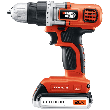Safety Test a Garage Door Opener
Written by Lee Wyatt (last updated June 26, 2019)
Everyone has heard some story about a garage door opener that didn't operate correctly, and someone ended up getting hurt. While this is a tragic event, it is something that doesn't have to happen. By periodically safety testing a garage door opener you can reduce, or even eliminate the possibility of having an accident. All it takes is a few minutes to safety test a garage door opener, just a few minute to help keep your family and friends a little safer.
- Ground level force sensitivity. All garage door openers that are sold now have something called a close-force sensitivity setting. This setting is what basically tells the garage door opener to stop if something is in the way. Test this sensitivity by placing a board that is at least one inch thick on the ground in the center of the door way. Press the switch to close the garage door, and watch to see what happens. When properly calibrated, the door should strain slightly when it comes into contact with the board before reversing and opening again. Make adjustments if this pressure is either too slight or great. You will know that it is too great if it dents or marks the board.
- Hand-test force sensitivity. To physically test the pressure that is exerted by the door, you will need to do a hand test. Stand just out of line with the door, hold your hands out palms up, just as if you were going to receive a gift, and trigger the garage door opener. As the garage door is closing, grab hold of the bottom and try to stop it from closing. Using your personal preference, determine whether you think that you need to use too much pressure to stop the door.
- Adjusting force sensitivity. If the door is exerting too much or too little force while it is closing, then you will need to adjust the force sensitivity setting. Unplug the power supply to the garage door opener before you do anything else. Take a look at the close-force screw, and look at what it says there. It should tell you which direction to turn the screw in order to add or lessen the force used to close the garage door. Make any adjustments that are necessary.
- Reversing sensors. Many garage door openers also come with reversing sensors. These sensors are typically infrared beams, that when broken cause the door to automatically reverse course and open. These sensors are extremely easy to test, simply trigger the garage door and place something in front of one of the sensors. The door should immediately stop, and reverse direction. If it doesn't, then you need to adjust the sensors to make sure that they are aligned properly.
- Adjusting sensors. When adjusting the reversing sensors to your garage door opener, first check to make sure that the wire connections are in fact connected. If they are, then realign the sensors so that they are facing towards each other, and also take the time to clean the lenses. Retest and readjust as often as necessary to ensure that they are working.
Author Bio
Lee Wyatt
Contributor of numerous Tips.Net articles, Lee Wyatt is quickly becoming a regular "Jack of all trades." He is currently an independent contractor specializing in writing and editing. Contact him today for all of your writing and editing needs! Click here to contact. Learn more about Lee...
Removing Pet Odor
Anyone that has a pet can tell you that one of their major drawbacks is having to potty train them. Usually this entails ...
Discover More
What is Caramelizing?
Have you ever wondered what is caramelizing? Simply put, caramelizing is a process that you can use to cook vegetables. ...
Discover More
Organizing Your Dresser
Often one of the most overlooked aspects of keeping your bedroom looking good is to have a nicely organized dresser. ...
Discover More
More Home Improvement Tips
Keep Your Home Safe from Fire
Keeping your home safe from fire should be a top priority for any homeowner. Whether you have a fireplace, a fire pit ...
Discover More
Reducing the Chance of Chimney Fires
The threat of a fire scares any homeowner. Reduce your risk of a fire by taking proper care of your chimney.
Discover More
Preventing Mold Growth
One of the greatest problems currently facing home owners is mold growth. Without taking proper care, mold growth can ...
Discover More

Comments